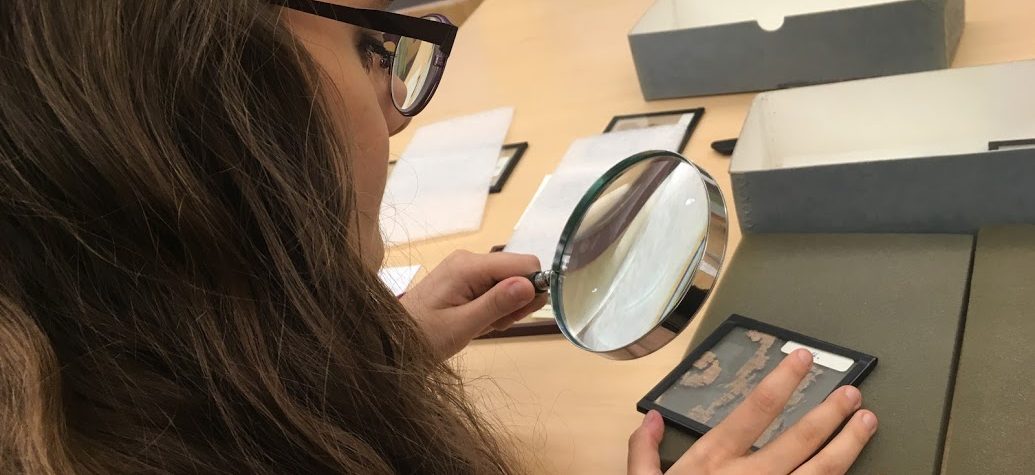Using a Dino-Lite: Link Click the link above for a video demonstration of how digital magnification can help papyrologists see individual letters. The writing on this fragment was extremely small, so I was glad of the help! I had given up all hope of reading this fragment until I used the dino-lite!
Papyrus Degradation and the Need for Preservation
This gif shows the same papyrus fragment in two photographs. The first, black-and-white photo was taken around or before 1985, and the second color photo was taken around 2012. I made this gif to highlight the level of degradation which occurs when a fragment is left untreated and largely ignored. In the first and second lines, what was once readable as του / ξενια becomes τ[ου] / ξ[εν]ια, with a net loss of four letters. Around the end of line three, by the modern printed letters and tape, even more fibers are missing in the 2012 photo. Also of note is the lost fibers between lines five and six, creating a gap which makes the faint traces of ink (that prove so valuable in the process of transcription) all but disappear. Also between lines five and six, the isthmus between the ευ (line 5) and β (line 6) has ripped and frayed, causing some of the ink in the sigma preceding the beta in line six to disappear. Then there is the matter of the beta (shown backwards in the 1985 photo). Timothy Renner asserts that the beta is “modern” in his assessment of this fragment (Bulletin of the American Society of Papyrologists, vol. 22, no.1/4. 1985. pp. 271-277). While I have no inclination to doubt Timothy Renner or his conclusion, it is still possible that the carbon ink transferred off of a now-disintegrated papyrus fragment onto a piece of tape, which is what the texture seems to resemble in the photo compared to the top right corner, which certainly is tape as I have confirmed while looking at this fragment in person. Of course, the issue now is that I cannot see the “modern beta” to confirm Renner’s judgment because it has been lost along with the other fragments. Where are the fragments now? Perhaps at the bottom left corner, all jumbled together? Behind the electrical-tape border of the housing? Or perhaps lost entirely when it was rehoused between glass.This is why conservation is so important, because whether that beta was ancient or modern, and whether the first two lines could have been read by a scholar today while missing four letters had Renner not documented them, (as with much in the field of papyrology,) we shall likely never know.
The Beginning of My Hanna Holborn-Gray Fellowship
Greetings! This blog is where I will post periodic updates and interesting findings from my summer research project. The funding from the Hanna Holborn-Gray Fellowship I received will allow me to focus my energy on studying papyrus this summer. My project will focus on reading the papyri in the Bryn Mawr College collections in the Rare Books and Manuscripts collection…

